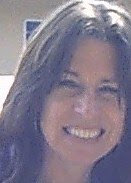Mirrors, masks and self-portraits – seeking the Naked Face

In the course of everyday facework to show ‘proper feeling’ that captures the wider social requirements of a situation and group, we often need to bracket, or keep to ourselves, the more eruptive feelings that are within us. The smiling waitress may have to bracket expressions of fatigue as she wishes guests to feel smiled upon. We have empathic connections to others and to the expectations of others who may required us to soothe them, or to fit in with them. However, even to shock an audience, or to challenge a genre of art, we still need to know the expectations of others. So there is an interesting line between what is included and what excluded from public self-presentation.
Dropping the mask
It isn’t so easy to drop the mask – even with oneself. There are unconscious processes against which we defend, whose expression we defer and delay – shape and change. So dropping the mask is less possible or easy than it may seem. The Portrait of Dorian Gray is a case in point. The ‘truth’ about his transformation as a result of the way he lived and treated others was on a painting in the attic. The traces inscribed themselves there on that face. His own fleshly face remained innocent and calm. But there were traces. He didn’t rush up to the attic to look at it, to know himself. He couldn’t have painted it, no matter how long he looked in the mirror. He was a stranger to himself, and, to a lesser extent, so are we all.
Mirror Face
We get a shock when we catch ourselves unawares without our mirror face on; that small moment of habitual composure, before we face ourselves. We brace, to see ourselves, to attempt to optimise oneself, to offer no trouble.
What do you encounter in completing a self-portrait?
When you paint a self-portrait, what are you looking at? What do you encounter? There are material symbols (the red chalk medium of Derwent Lees portrait marks him as Australian), many angles of a face (as with Lewis Miller), aspects of context, friends who are included (such as the tartan clad image ‘Glasgow’ of Madeline Green and her sister). The image can be more or less realistic, idealised, or grandiose. Hugh Ramsay’s piano, the ostrich-feather cap of a fine horseman from the light brigade with his trim waist in riding trousers, the scar of a lost pinky finger of a person in protest at Tiananmen Square healed and holding an image of the artist as a small boy, the disco ball pattern of cancer cells whirling like traces of motion capture machine tracing the artist’s form with their movement, the beauty of one’s youth.
Traces in spite of us
Yet the secrets we keep from ourselves still leave physical traces, more readily read by others, or by a later self. But in facing them, and registering them, there is some self-reflection possible and something happens at that moment in the face. So self-portraiture can be viewed from many angles, as painting a readily available ‘people’ (Lewis Miller) as an opportunity for self-reflection, or the offering of a personal vision across time. It is a form of narcissistic survival – an image of self that survives death. It is you, for the future. Our fleshly face perhaps long forgotten.
Labels: facework, Naked Face

